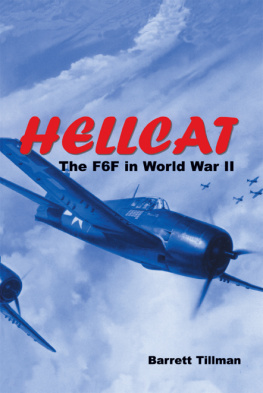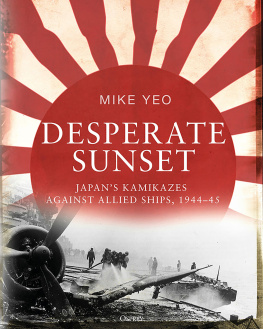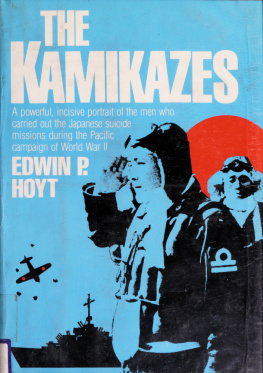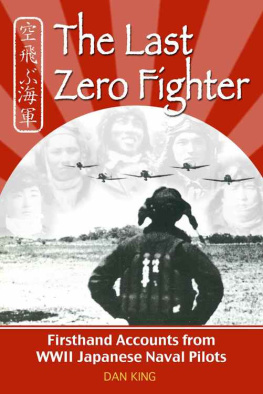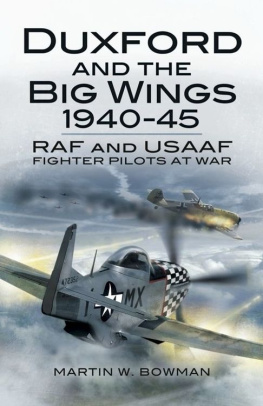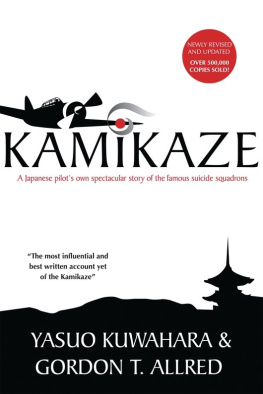ZERO!
BY
MASATAKE OKUMIYA AND JIRO HORIKOSHI
WITH
MARTIN CAIDIN
This edition is published by PICKLE PARTNERS PUBLISHINGwww.picklepartnerspublishing.com
To join our mailing list for new titles or for issues with our books picklepublishing@gmail.com
Or on Facebook
Text originally published in 1956 under the same title.
Pickle Partners Publishing 2014, all rights reserved. No part of this publication may be reproduced, stored in a retrieval system or transmitted by any means, electrical, mechanical or otherwise without the written permission of the copyright holder.
Publishers Note
Although in most cases we have retained the Authors original spelling and grammar to authentically reproduce the work of the Author and the original intent of such material, some additional notes and clarifications have been added for the modern readers benefit.
We have also made every effort to include all maps and illustrations of the original edition the limitations of formatting do not allow of including larger maps, we will upload as many of these maps as possible.
CHARTS AND BATTLE-MAPS
Japanese Bases in China and Formosa
Pearl Harbor Attack, Dec. 8, 1941
Sea Battle off Malaya, Dec, 9-10, 1941
Track Chart of Zero, Dec, 1941 to Mar.
Track Chart of Nagumo Force, Mar. 26 to Apr. 12, 1942
Battle of the Coral Sea, May 8, 1942
Adm. Yamamoto Dies in Action, April 18,1943
PREFACE
On the first day of World War II, the United States lost two thirds of its aircraft in the Pacific theater. The Japanese onslaught against Pearl Harbor effectively eliminated Hawaii as a source of immediate reinforcements for the Philippines. And on those beleagured islands, enemy attacks rapidly whittled down our remaining air strength until it could no more than annoy a victory flushed foe.
Japan controlled as much of the vast China mainland as she desired at the time. She captured Guam and Wake. She dispossessed us in the Netherlands East Indies. Singapore fell in humiliating defeat, and brilliantly executed Japanese tactics almost entirely eliminated the British as combatants. Within a few months fearful anxiety gripped Australia; its cities were brought under air attack. Japanese planes swarmed almost uncontested against northern New Guinea, New Ireland, the Admiralties, New Britain, and the Solomons, Enemy occupation of Kavieng, Rabaul, and Bougainville not only threatened the precarious supply lines from the United States, but became potential springboards for the invasion of Australia itself.
No one can deny that during those long and dreary months after Pearl Harbor the Japanese humiliated us in the Pacific We were astonishedfatally soat the unexpected quality of Japanese equipment. Because we committed the unforgivable error of underestimating a potential enemy, our antiquated planes fell like flies before Japans agile Zero fighter.
At no time during these dark months were we able to more than momentarily check the Japanese sweep. The bright sparks of the defenders heroism in a sea of defeat were not enough. There could be no doubt that the Japanese had effected a brilliant coup as they opened the war.
It is astonishing to realize, then, that even during this course of events Japan failed to enjoy a real opportunity for ultimate victory. Despite their military successes, within one year of the opening day of war the Japanese no longer held the offensive. The overwhelming numerical superiority which they enjoyed, largely by destruction of our own forces with relative impunity, began to disappear. By the spring of 1943 the balance clearly had shifted. Not only were we regaining the advantage of quantity; we also enjoyed a qualitative superiority in weapons. The Japanese were on the defensive.
The majority of the Japanese military hierarchy could not agree to this concept. They viewed the setbacks in the Pacific as no more than temporary losses. They basked in their successes of the first six months and reveled in a spirit of invincibility. Enhanced by centuries of victorious tradition, cultured by myths and fairy tales, and bolstered by years of one-track education, Japanese confidence of victory was even greater than our own.
There are many reasons why the Japanese failed in their bid to dominate half the world. One reason, it has been said, is that while Japan fought for economic gain, we fought a strategic war of vengeance, a war which promised a terrifying vendetta for the people of Japan.
We can be much more specific than this. The Japanese failed, primarily, because they never understood the meaning of total war. Modern war is the greatest co-operative effort known to man; the Japanese never were able to fuse even their limited resources into this effort. They limped along with a mere fraction of our engineering skill. Throughout the war they were constantly astonished at the feats of our construction crews which hacked airfields out of solid coral and seemingly impenetrable jungle, at the rapidity with which we hurled vast quantities of supplies ashore at invasion beachheads. Air logistics in the form of a continued flow of airborne supplies was unknown to them.
The Japanese lacked the scientific know how necessary to meet us on qualitative terms. This was by no means the case early in the war when the Zero fighter airplane effectively swept aside all opposition. In the Zero the Japanese enjoyed the ideal advantage of both qualitative and quantitative superiority. The Japanese fighter was faster than any opposing plane. It outmaneuvered anything in the air. It outclimbed and could fight at greater heights than any plane in all Asia and the Pacific. It had twice the combat range of our standard fighter, the P-40, and it featured the heavy punch of cannon. Zero pilots had cut their combat teeth in China and so enjoyed a great advantage over our own men. Many of the Allied pilots who contested in their own inferior planes the nimble product of Jiro Horikoshi literally flew suicide missions.
This superiority, however, vanished quickly with our introduction of new fighter planes in combat. As the Zeros fell in flames, Japans skilled pilots went with them. Japan failed to provide her air forces with replacements sufficiently trained in air tactics to meet successfully our now-veteran airmen who made the most of the high performance of their new Lightnings, Corsairs, and Hellcats.
At wars end half of all the Japanese fighter planes were essentially the same Zero with which the Japanese fought in China five years before.



